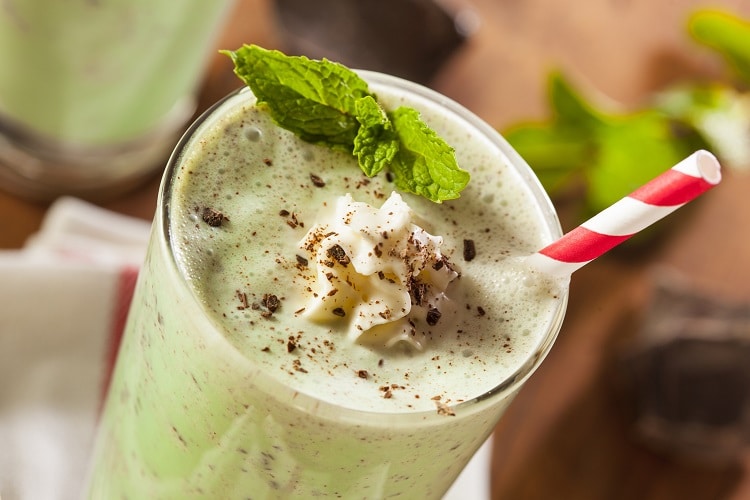Take a trip to Charleston, South Carolina, and there will be food.
Lots of food.
There will be a homecoming of buttermilk biscuits and a sea bed of oysters—fried, stewed and raw.
Sweet crab and tender local shrimp.
There will be steaming hush puppies and fresh-caught flounder, delicate tilefish, never-ending racks of peppery pork chops and big bowls filled with creamy whirlpools of bouillabaisse.
There will also be gooey pecan and crumbly apple pies, torched ’n toasty crème brulee and tempting fruit-laced parfaits.
There will be drink, too.
Southern bourbons and ryes by the batch, fermented offerings from local vintners and brewers galore. Mimosas in the morning. Manhattans by twilight.
This is Charleston—one of the most impressive and prodigious food scenes at this very moment within the United States—a melting pot of chefs and restaurant owners forming a support system with dozens of talented farmers and skilled purveyors. They bond like family together, as they do with their respective staffs and customers alike—treating them all with the utmost in appreciation and, yes, a strong dose of southern hospitality.
This is Charleston, so there will be food.
My first bite comes minutes after I’ve left the airport and wound my way through the easy-going North Charleston neighborhood. I’m near the Charleston Area Convention Center, which is a sprawling campus where event-goers are lucky to have Jim & Nick’s Bar-B-Q nearby, the 30 year-old Birmingham, Alabama-based chain where hogs get elevated to heavenly status via prized slow-cooking techniques. It is here where you’re greeted by the sweet pungency of hickory smoke even before you’ve walked in, where a smiling hostess automatically opens the door for you upon arrival and departure (nice touch!) and where literally everything that’s served on the menu is scratch-made. This includes the addictive cheese biscuits (try to stop at five), mouth-watering pork shoulder sandwiches, tangy coleslaw and simmering ham-studded collard greens.
Say “chain” all you want, Jim & Nick’s is independently satisfying from start to finish.
As I continue my car ride toward the city’s center, I am surprised by not seeing the typical panorama of skyscrapers that most cities offer as an initial visual welcome. Charleston, dubbed “The Holy City” because of its countless number of churches, is a low-lying place (city ordinance cites no structure can be built any taller than the highest steeple).
With its coastal situation, southern graces and a history that goes back to the very beginnings of this country, Charleston has recently become the place to live and to visit. Conde Nast Traveler calls it their “#1 travel destination in the US,” and Travel & Leisure agrees, naming it a Top Ten City in the United States and Canada. Not New York and not New Orleans. Charleston.
Similar to New Orleans in its water’s edge situation, though, and by its overall plantation heritage, Charleston has it over the Big Easy in many ways, including “the friendliness factor.”
Whereas I’ve been occasionally scammed by unscrupulous types (or suffered attempted pickpocketings) while visiting the Crescent City (a sad but cautionary “comes with the territory” fact), the welcome here by nearly everyone I’ll meet is as prevalent as it is legitimate.
As stated, Charleston is home to American food at its finest. On the vanguard of this tasteful surge is Maverick Southern Kitchens. This company’s signature restaurant, Slightly North of Broad (S.N.O.B.), is run by hands-on chef Frank Lee, who is considered one of the crown-wearing royalty of true Carolina cuisine.
The restaurant, with its high ceilings, soaring columns and dramatic chandeliers, offers a buzzing, patron-gazing dinnertime energy. Rarely have I sensed such excitement within a dining room. High anticipation and a sense of well-cared-for beings about to feast grandly are palpable throughout.
I dine as one should at S.N.O.B., heartily and keeping the local pedigree on my plates at all time. Fried oysters offer crackle on the outside, velvety plumpness within. Silken tuna slivers have been given a barbecued rub to go with ribbons of spicy country ham. Then it’s on to that bellwether of Lowcountry cooking: shrimp & grits. A true classic and as satisfying as any dish I’ve ever tasted.
If Frank Lee is a king of this sort of cuisine, then Sean Brock is his innovative standard bearer. This 2010 James Beard Award-winning chef is the co-owner of several cutting-edge area restaurants, including famed McCrady’s, and recently-opened Husk. The latter is tucked away in a lovely 19th century property amid Queen Street’s charming historic neighborhood filled with pastel shaded homes and dainty gardens. The restaurant itself tastefully salutes the Carolinian experience through its dynamic support of artisanal producers, with a keen focus on the farm-to-table movement.
Next door is Husk Bar. Situated in a two-story red brick and faded wood beamed structure of deep antiquity, this is no “watering hole”; rather, it is that bar—the one you’ll read about in the top lifestyle and travel magazines—the place serving classic cocktails and modern drink concoctions. Husk possesses an archival mixology of well-thought-out libations. Here, the bartenders are fastidious, almost geeky, in their dedication to their craft. Husk offers exclusive labels, craft-centric beers and the largest selection of bourbons you’ll ever see. The tipplers at Husk make their own juices and syrups and, get this, they have a fancy ice-making machine that can shape a frozen block into a round baseball-sized marble that’s then added to a glass of rare whisky. “Fewer surfaces on the ice,” an earnestly enthusiastic tender explains to me while holding up the icy orb like a crystal ball, “so the drink doesn’t get watered down as easily.”
This sort of “thinking of everything” dedication is why Husk is my pick for “Best Bar in the US.” All I’ve had to do is travel to Charleston to find it.
More traditional Lowcountry nods are given at Peninsula Grill inside the AAA four-diamond and Relais & Chateau-rated Planters Inn. It is where Chef Graham Dailey shares a far-reaching vision and deep creativity within this genteel dining establishment situated inside comfy club house–like confines. His is traditional fare with a wink at New American subtlety, a dressed up but “keepin’-it-easy” approach to fine cookery.
In all, Peninsula adds up as one of the best of the city’s restaurants (as rated by Charleston City Paper), there, within one of the city’s finest hotels.
The Halliday Companies (which owns Peninsula/Planters Inn) also operates Hank’s Seafood Restaurant, a nautically inspired, casually fine dining eatery with a festive milieu firmly in place. A concrete colored box outside, like an ice chest containing sea treasures inside, Hank’s provides an old-timey air within, a pine paneled and brass lantern-laden ambiance like fish houses of yore. It’s where Hank’s executive chef, Frank McMahon (who trained at “best of the best” Le Bernadin), gives Lowcountry fare a fresh, ocean wave-tinged uptick.
Recommendation: Request or wait for a seat at the restaurant’s communal table. As locals will tell you (and I learn first-hand), you’ll sit down among strangers and leave having made great new friends.
Admission: While I’ve been asked to tour scores of kitchens in my time, Hank’s is the only one I ever had the gumption to broach the subject myself, sheepishly asking Chef Frank if I could step inside his working area. Gladly acquiescing, the eager captain showed me around, and as expected, it was an orderly, utterly spotless and shipshape affair.
Charleston Place hotel and conference center is in the very heart of the city. It possesses a plush lobby and sitting areas with expansive arches and many chandeliers, offering a welcoming élan to regulars and visitors alike—one of the see and be seen venues in town. Dinner can be enjoyed at the richly appointed fine dining bastion, Charleston Grill, where Chef Michelle Weaver brings her A-game to this polished and snazzy room.
The Grill’s more casual sibling, Palmetto Café, has, as I understand it, gone through a dramatic redo with the recent removal of lots of live greenery and somewhat smothering dark mahogany. Its new look is soothing, almost heaven-like, in a scheme that’s filled with gauzy white and open spaces. I never saw Palmetto 1.0, but this version is definitely pleasing to my eye.
Deliciously gloppy cheese curds with bacon start the lunch off decadently. Tender lemon and red wine marinated grilled octopus balance the meal satisfyingly.
If the Charleston Grill gets all the attention, then those who think they’re in-the-know food-wise should give Palmetto Café a try.
The pinnacle of Charleston’s love affair with food occurs every year at the end of February with the BB&T Charleston Wine & Food Festival, a weekend long culinary village featuring grand tasting tents, a plethora of chefs and cookbook authors, beverage purveyors, grilling gods, retailers and so forth, comprising what is arguably the premier show of its kind in the country.
Savvy culinary-ians book all their favorite events months in advance as almost all featured events sell out quickly. Gaining a prime slot at this festival is nearly as difficult as scoring a last-minute table on Saturday night, prime time at Slightly North …
On the other hand, I am just happy hanging out by the Whole Foods tent and trying every craft beer they’re pouring that day.
Stuffed with beer suds, untold vendor nibbles and countless tastes from the Piggly Wiggly concession, I am in no mood for formalities at dinnertime. Thankfully, my reservation is at Fleet Landing, the hurricane-proof concrete leviathan on the harbor front, with its lovely deck views outside and its cavernous yet “maritime chic” interior—a perfectly casual foray.
My belt notch-loosening meal is indicative of the contemporary seafood they serve at Fleet: chilled oysters on the half shell, veloute of lobster, rock shrimp, leeks and corn stuffed into two softball-sized hush puppies (double comfort food trouble!) and a whole fried southern flounder with apricot glaze & red rice—my fork getting nicely lost in the deep scoring on that immense fish.
It’s only April, so I still have lots of year to go before making my final assessment on the “Meal of the Year” for me. Currently, though, the hands-down winner is my dinner at McCrady’s—Sean Brock’s other place (Husk)—the one that made a major name for the chef and for Charleston.
This expansive brick abode (lots of large and small private rooms and holding several dining rooms)—a centuries-old warehouse relic turned gastronomic temple—McCrady’s seethes Lowcountry comfort with preparation styles that pendulum back and forth between traditional and whimsically esoteric.
First course: Chilled English pea soup with a briny bounty of pickled clams at its basin. Second course: Pan roasted tilefish & roasted potatoes with a cozy ladling of pulled chicken and soft, sweet carrots. Third course: Aged duck done two ways—roasted on the bone and pate.
Dessert: A deconstructed chocolate chess pie that almost brings me total salvation.
This retelling does not come from notes (though I take copious ones).
This meal—good as can be—is etched for posterity upon my brain.
The pie (all of it) is washed down with the best coffee in the land: La Colombe. This house blend is made exclusively for Chef Brock and it is served in a French press.
Hell, I live in Philadelphia (where La Colombe comes from) and I’ve yet to find that sort of simpatico between the famed roaster and our most notable restaurants within my City of Bro’ Love.
But that’s further illustration of Charleston’s glorious restaurant scene and the commitment it spawns.
It is a place to find mixed marriages of chefs and restaurateurs, a smiling southern lot who have knowingly put together culinary representation that goes along well with their duly deserved #1-rating.
In Charleston you only have to walk but a moment to find what you’re seeking to satisfy you.
Because in Charleston there will be food.
Lots of food.
- Photography: Ken Alan



